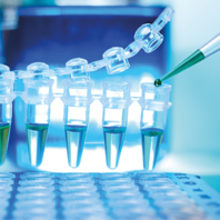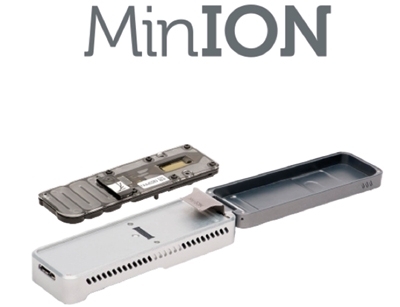Comment: Moving microbial diagnostics into the 21st century
09 August 2016

Rapid and accurate diagnosis is critical for the effective treatment of life-threatening infections, such as bloodstream, respiratory tract and complicated urinary tract infections. These clinical syndromes have complex aetiology and require the recognition of pathogens within a variety of challenging sample types.
The ‘gold standard’ culture techniques are labour intensive, have long turnaround times and often offer poor clinical sensitivity. Even with the addition of mass spectrometry for rapid identification of bacterial isolates, and automated culture systems for isolation, the turnaround time is at least two days: one to grow the bacteria and, at best, one to identify pathogens and test their antimicrobial susceptibility. Meanwhile, in the absence of pathogen or resistance information, the patient is treated empirically with broad-spectrum therapy, which has evolved over time to include previously reserved potent antibiotics as a result of increasing antimicrobial resistance. This empirical therapy is often unnecessarily potent and, conversely, sometimes ineffective due to inherent or acquired resistance. Nucleic acid amplification-based diagnostic tests are a step in the right direction, providing results within hours, but are limited by the range of pathogens and resistances they can detect.

A paradigm shift in diagnostics technology is required, to allow the development of a universal diagnostic that can detect any pathogen or resistance. Next-generation sequencing (NGS) technology, particularly rapid nanopore sequencing using Oxford Nanopore Technologies’ MinION device, has the potential to drive this shift by combining rapidity with comprehensiveness beyond that of culture or PCR. All pathogens contain nucleic acids and so identification in clinical samples by NGS, for example, metagenomics sequencing, is potentially universal (i.e. capable of detecting bacteria, viruses and fungi). Nothing has to be known about the pathogen in advance of testing, unlike PCR which only targets predetermined pathogens or culture, which requires different approaches for bacteria, fungi and viruses. Recent advances in nanopore sequencing technology include: reduced capital and running costs (US$1,000 returnable deposit for the MinION nanopore sequencer and as little as US$45/sample when barcoding 12 samples per flow cell); portability (MinION devices were recently used to track Ebola in rural West African communities) and rapid real-time analysis (pathogen ID within 10 mins of starting the device) using freely available analysis tools in Metrichor. It has now become realistic to investigate the utility of metagenomics sequencing for rapid diagnosis and antimicrobial susceptibility testing in clinical microbiology.
So why are researchers and clinical microbiologists across the world not implementing this technology in their laboratories as we speak? You’ve guessed it – sample preparation is the remaining bottleneck, a commonly neglected research area as it produces few ‘glamour journal’ articles. Working directly with clinical samples, without any culture enrichment steps, is challenging as competing nucleic acid, particularly that of the human host, make metagenomics sequencing- based pathogen diagnosis insensitive and costly (spending time and money sequencing unwanted host nucleic acid and struggling to find all or any of the pathogen genome with the sequencing depth available). Some sample types are particularly challenging, e.g. blood, where the ratio of human:bacterial DNA in a septic blood sample can be as high as 10 billion:1. Enrichment is necessary, but, for metagenomics sequencing, rather than time-consuming culture enrichment we need pathogen nucleic acid enrichment and/or host nucleic acid depletion. For metagenomics sequencing-based clinical microbiology to succeed, effective enrichment is vital.
We are currently developing novel pathogen DNA enrichment and human DNA depletion strategies and applying them to blood, sputum and urine for the metagenomics sequencing- based diagnosis of sepsis, hospital-acquired pneumonia and complicated urinary tract infections (UTIs). The different sample types come with different challenges, such as large numbers of leukocytes and low pathogen numbers in blood vs large numbers of leukocytes and pathogens in urine; therefore, we modify our enrichment/depletion strategies depending on the sample type being tested. This ensures that the cost–benefit is appropriate for the various sample types. Our current metagenomics sequencing pipeline (including host DNA depletion) for UTI and hospital-acquired pneumonia samples takes approximately 4 hours from sample to answer (pathogen identification and antimicrobial resistance gene identification) using MinION nanopore sequencing. The sepsis pipeline takes approximately 7 hours.
By providing comprehensive, rapid pathogen and antimicrobial resistance identification, metagenomics sequencing will reduce the time that patients remain on empirical broad-spectrum antibiotics, enabling clinicians to move away from a ‘one-size-fits-all’ approach to antibiotic treatment to a stratified medicine approach. This will lead to a reduction in the use of inappropriate antibiotics, reduced risk of antibiotic resistance and reduced patient morbidity and mortality. In the final O’Neill report, Jim O’Neill called for governments to “mandate now that by 2020, all antibiotic prescriptions will need to be informed by up-to-date surveillance information and a rapid diagnostic test wherever one exists”. MinION metagenomics sequencing will ensure that a rapid diagnostic test exists for every disease.
JUSTIN O’GRADY
Norwich Medical School, University of East Anglia, James Watson Road, Norwich, NR4 7UQ
[email protected]


